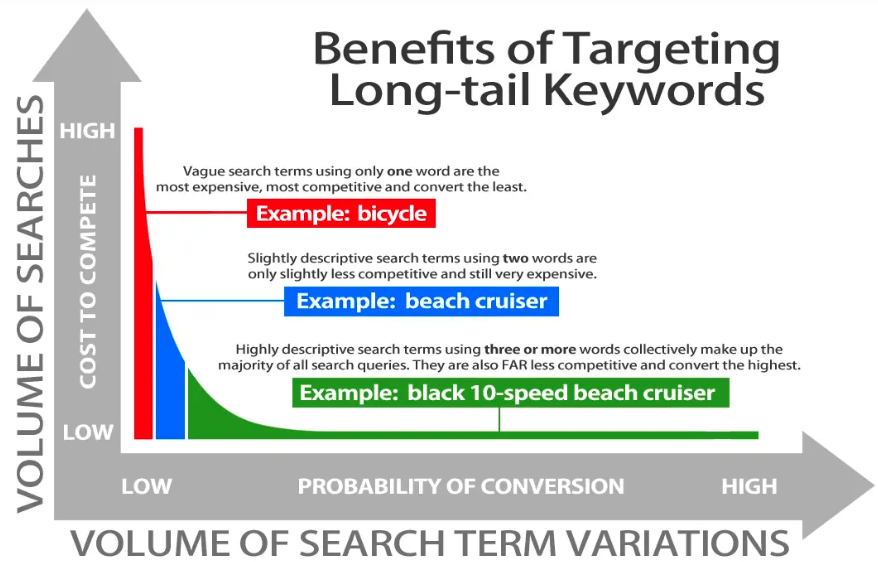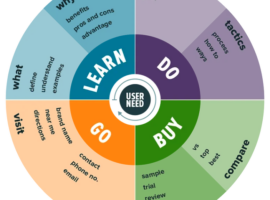Better SEO: Target Long-Tailed Keywords
Related Questions Asked and Answered
1. What are long-tail keywords and why are they important for SEO?
Long-tail keywords are highly specific search phrases, typically consisting of three or more words. They represent a more focused search intent, often leading to higher conversion rates as the searcher is further along in the buying process. In SEO, targeting long-tail keywords can help businesses improve SEO rankings more easily due to less competition and a higher likelihood of attracting relevant, ready-to-convert visitors.
2. How can I find long-tail keywords that are relevant to my business?
You can use keyword search tools like SEMrush, Ahrefs, or Google Keyword Planner to discover long-tail keywords related to your industry. Also, consider customer feedback, search queries on your site, and competitor research to uncover relevant phrases. Local and niche-specific keywords can be particularly useful, especially if you serve a defined audience or geographic area.
3. What’s the best way to target long-tailed keywords to improve my website’s search ranking?
Incorporate long-tail keywords naturally into your website content, particularly in headings, titles, and meta descriptions. Create dedicated landing pages for each targeted long-tail keyword to ensure relevance and increase your chances of ranking. Monitor performance regularly and refine your strategy based on which long-tail keywords are driving traffic and conversions.
4. How do long-tail keywords differ from broad keywords in terms of conversion rates?
Long-tail keywords typically have higher conversion rates compared to broad keywords because they reflect a specific user intent. A searcher using a broad term like “marketing” may be at the beginning of their research, while a person searching for “best local SEO services for small businesses” is likely further along in the decision-making process. As a result, long-tail keywords attract more qualified traffic ready to take action.
5. Why should my business focus on targeting long-tail keywords in my digital marketing strategy?
Focusing on long-tail keywords allows you to target a more specific audience, leading to higher-quality traffic and more meaningful conversions. These keywords are less competitive, making it easier for smaller businesses to rank on search engine results pages. Additionally, targeting long-tail keywords helps you understand your audience’s needs more precisely, allowing you to tailor content and offers accordingly.
What Are Long-Tail Keywords and Why Are They Are Crucial for SEO?
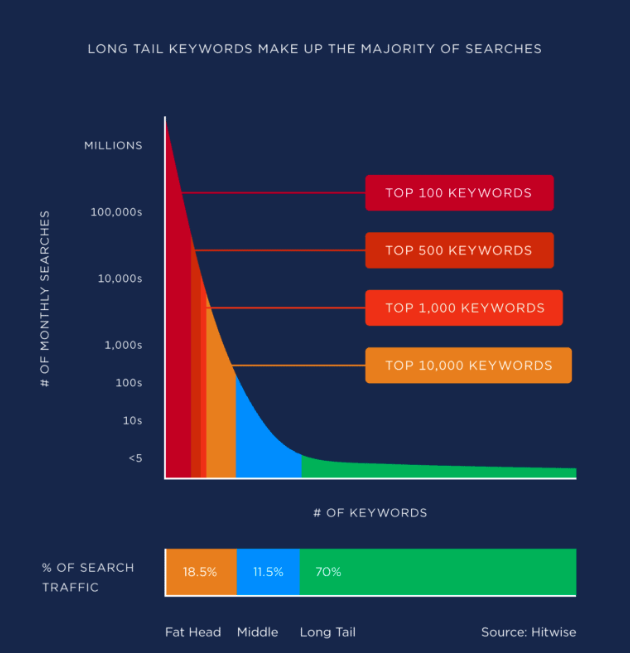
Long-Tail Keywords Strategy refer to more specific, less common search terms that people use when looking for something very particular. For example, instead of searching for “dog toys,” a long-tail keyword could be “dog toys for small dogs that love squeaky sounds.” While long-tail keywords typically have lower search volumes compared to broader terms, they are often far more effective at bringing in high-quality, motivated traffic.
The reason long-tail keywords are so important for SEO is that they represent highly specific user intents. Someone searching for a long-tail keyword is more likely to convert—whether that means making a purchase, filling out a form, or engaging with your content. These searchers often know exactly what they want, which makes them more likely to complete a desired action on your website.
The nature of long-tail keywords also means they generally face less competition. Broad keywords like “digital marketing” or “online advertising” are competitive and difficult to rank for, especially if you’re just starting. In contrast, a more specific long-tail keyword like “SEO services for small businesses in Phoenix” will have far fewer competitors. This provides a great opportunity for businesses to rank more easily and attract a highly targeted audience.
Additionally, long-tail keywords help businesses rank for multiple search terms at once, all while providing deeper insight into user intent. By focusing on these types of keywords, you’re not just optimizing for traffic; you’re optimizing for the right kind of traffic that is more likely to engage with your brand and take action.
How Can I Find Long-Tail Keywords That Are Relevant to My Business?
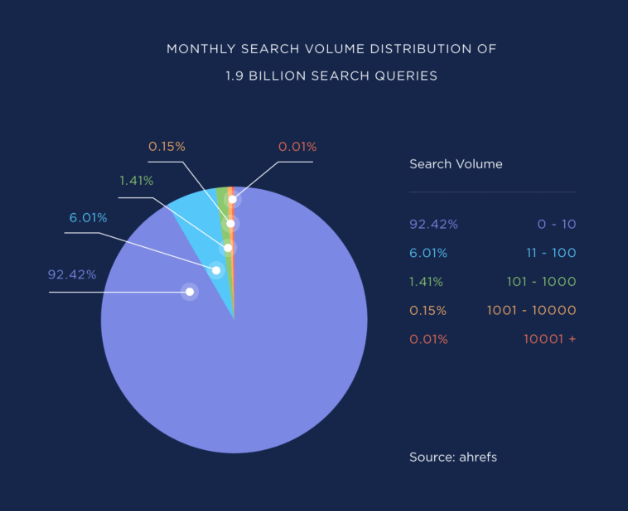 Finding long-tail keywords that resonate with your audience and align with your business goals starts with research. You can start by using keyword research tools that specialize in discovering these terms. Here’s how to go about it:
Finding long-tail keywords that resonate with your audience and align with your business goals starts with research. You can start by using keyword research tools that specialize in discovering these terms. Here’s how to go about it:
- Use a Keyword Research Tool: Popular tools like SEMrush, Ahrefs, or Ubersuggest can help you identify relevant long-tail keywords. By entering broad topics or industry-related terms into these tools, you can see suggestions for more specific, niche phrases that your potential customers might be searching for.
- Leverage Your Own Website’s Data: Analyze your website’s search traffic. Tools like Google Search Console show you the actual search queries bringing people to your site. Pay attention to the longer, more specific search terms that are already driving traffic.
- Customer Questions and Feedback: Consider the questions your customers often ask. If you are in the service industry, think about what clients are specifically looking for. A lot of the time, the questions you hear in conversations or through customer service interactions can be turned into powerful long-tail keywords.
- Competitor Research: Look at what keywords competitors are ranking for. Tools like SpyFu or SEMrush allow you to analyze the keyword strategies of your competition. If they’re ranking well for a long-tail keyword, that’s an opportunity you can capitalize on.
- Use Your Local Knowledge: If you’re a local business, long-tail keywords that include geographic terms are vital. For example, “best Italian restaurant in downtown Chicago” would be a highly effective long-tail keyword for a local restaurant.
What’s the Best Way to Use Long-Tail Keywords to Improve My Website’s Search Ranking?
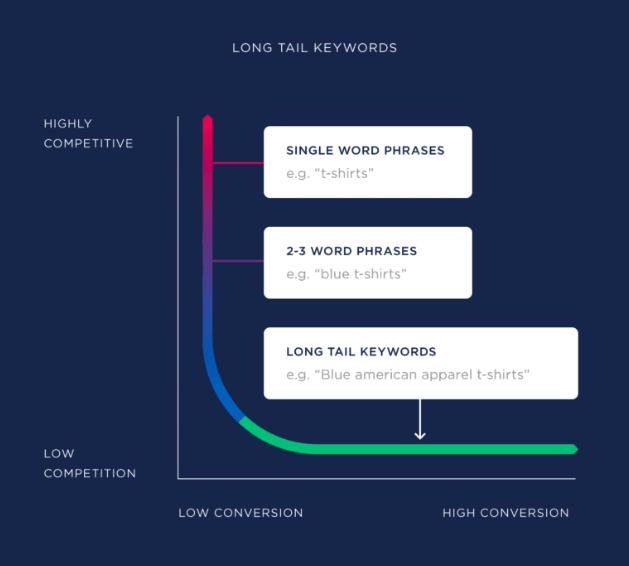 To make the most of long-tail keywords, there are several best practices you should follow:
To make the most of long-tail keywords, there are several best practices you should follow:
- Incorporate Them Naturally in Your Content: Simply adding long-tail keywords in your content doesn’t guarantee success. You must incorporate them in a way that reads naturally and provides value to your audience. It’s important not to overstuff your content with keywords, as that can negatively impact the user experience and your SEO ranking.
- Use Long-Tail Keywords in Titles and Meta Descriptions: The title and meta description are some of the first things users see when they come across your page on search engine results. Including your long-tail keywords in these areas can increase the likelihood of your page getting clicked.
- Optimize Landing Pages: If you’re targeting a specific long-tail keyword for a product or service, create a dedicated landing page. This allows you to focus your content and design around the specific keyword, improving your chances of ranking higher.
- Use Variations of Your Long-Tail Keywords: Don’t just focus on one exact phrase. Use variations of your long-tail keyword to avoid keyword cannibalization and help increase your visibility for related searches. For example, if your long-tail keyword is “digital marketing services for startups,” you could also target phrases like “startup marketing strategy” or “affordable marketing for new businesses.”
- Monitor and Adjust Your Strategy: SEO is an ongoing process. Regularly check the performance of the long-tail keywords you’re targeting, and adjust your strategy as needed. If a keyword is driving traffic but not converting, consider adjusting the landing page or the call to action to better meet the needs of your audience.
How Do Long-Tail Keywords Differ From Broad Keywords in Terms of Conversion Rates?
The major difference between long-tail and broad keywords lies in the intent of the searcher. Broad keywords like “digital marketing” tend to attract a large audience, but they don’t always convert as well. The searcher might be casually exploring the topic without a clear idea of what they’re looking for. For example, a person searching for “online marketing” might be at the beginning of their journey, trying to understand what the process involves.
Long-tail keywords, on the other hand, reflect a more specific search intent. When someone types in a long-tail keyword like “SEO services for healthcare providers,” they are usually further along in their buying journey and looking for a solution. As a result, long-tail keywords typically improve conversion rates because the people searching for them are more likely to take the next step, such as contacting you, making a purchase, or subscribing to your service.
Using long-tail keywords can help you attract visitors who are already considering a purchase and are looking for a solution, which makes them much more likely to convert into customers. The specificity of the keyword aligns with the user’s specific needs, increasing the chances of them finding what they’re looking for on your website.
Why Should My Business Focus on Targeting Long-Tail Keywords in My Digital Marketing Strategy?
Focusing on long-tail keywords offers numerous benefits for your business:
- Better Targeting: Long-tail keywords enable you to target very specific audiences, which leads to higher-quality traffic. For example, someone searching for “eco-friendly office supplies” is likely interested in purchasing products, making them a more valuable lead than someone simply searching for “office supplies.”
- Less Competition: Because long-tail keywords are more specific, there’s usually less competition to rank for them. This gives smaller businesses and newer websites a better chance at securing high-ranking positions in search results.
- Higher Conversion Rates: Long-tail keywords typically attract people who are further along in their decision-making process. As a result, these visitors are more likely to convert into paying customers, especially if your content meets their specific needs.
- Cost-Effective: If you’re running paid search campaigns, long-tail keywords can be more cost-effective because they tend to have lower cost-per-click rates. You can reach a highly targeted audience at a lower cost, maximizing your marketing budget.
- Long-Term SEO Benefits: By targeting long-tail keywords, you can build up a broad base of content that ranks for many variations of your keywords. This helps create a solid SEO foundation for your business, boosting your visibility over time.
Key Takeaways
- Long-tail keywords help businesses rank more easily
By targeting specific search terms, you’ll face less competition, making it easier to rank and attract the right kind of visitors to your site. - Conversion rates tend to be higher for long-tail keywords
Because they reflect specific user intent, long-tail keywords often bring in more qualified traffic, leading to higher conversion rates. - Long-tail keywords offer better targeting
With more specific terms, you can create content that appeals directly to your ideal customers, which leads to increased engagement and higher sales. - Long-tail keywords can save your marketing budget
Targeting long-tail keywords is cost-effective, especially in paid search campaigns, where competition is typically lower. - They are essential for a well-rounded SEO strategy
Incorporating long-tail keywords into your content strategy helps build a solid foundation for SEO, helping you rank for multiple related terms.


